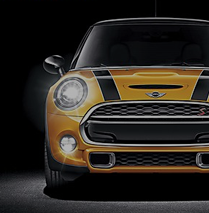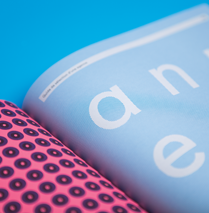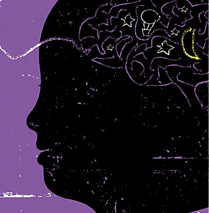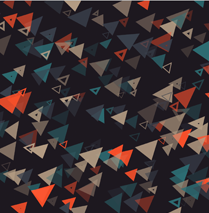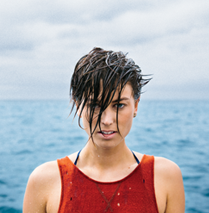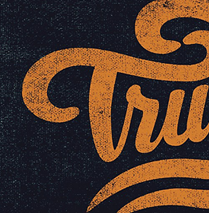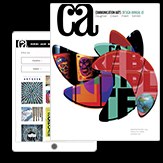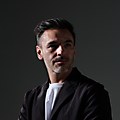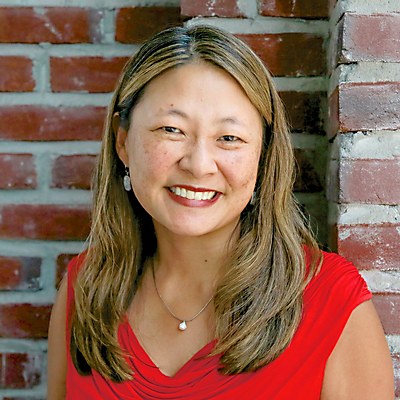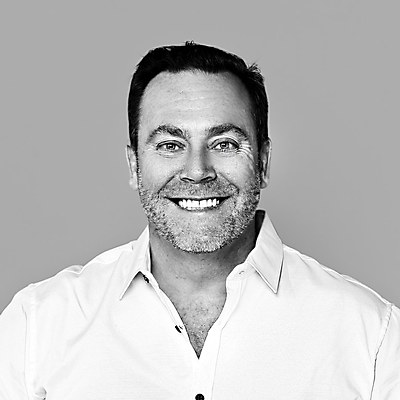How did you discover your passion for design and advertising and get started in the field? Growing up with an engineer father and a yoga teacher mother, I was drawn to the fusion between order and intuition, structure, and human connection. These influences nudged me toward exploring design as a career path. Whether in my personal or professional life, I value simplicity, empathy and beauty. As a creative director and founder, I deeply enjoy integrating these elements into my design practice.
Tell us about the history of your creative agency Brands&People. What inspired you to establish your own agency in Monterrey, Mexico, and what led to you founding your Austin, Texas–based branch? Growing up in Latin America where design often feels chaotic and disorganized, we were inspired by the abundance of problems waiting to be solved. This motivated me and cofounder Emmanuel Moreau to establish our own design firm in Monterrey, Mexico, when I was the young age of 22. Despite the challenges of doing so, we saw an opportunity to bring design and innovation to a city with an industrial background. In 2012, our journey took an exciting turn when we were invited to join the TBWA global collective. This partnership provided us with the structure and global best practices needed to elevate our work to new heights. The decision to start our Austin operation in 2024 was fueled by a shared ethos with the city’s vibrant creative community. We were captivated by Austin’s dynamic energy, seeing it as the perfect environment to expand our agency’s reach. This move has allowed us to access new markets, collaborate with diverse talent and pursue our mission without borders.
What do you do as creative director of Brands&People, and what do you like about it? Let me share a quick story. During my studies at the Berlin School of Creative Leadership, as part of a global MBA program, my professor Babis Mainemelis posed a thought-provoking question: If you imagine your organization as a boat, what is your role in that boat? Initially, like many of my peers, I envisioned myself as the captain, steering the ship. However, Professor Mainemelis showcased images of various types of boats, each tailored to different contexts and purpose. From rowboats to luxury speedboats, each vessel’s effectiveness depends on its design and suitability for its environment. Mainemelis aptly defined the role of the creative leader as the designer of the boat, emphasizing the importance of understanding its purpose and unique context. No need for a cruise on a small lake or a luxury yacht on whitewater rapids. This lesson reaffirmed by belief in the importance of crafting solutions tailored to specific needs and contexts of our clients, but also of our team. So, when asked what I do for a living, sometimes I say: “boat designer.”
Recently, Brands&People collaborated with Austin-based accessibility technology company Strap Tech on creating ARA, a wearable device that alerts people with visual impairment to potential obstacles around them through vibrations and hepatic technology. What was your experience with collaborating on this? Working on ARA has been a remarkable journey for us, not only for the groundbreaking assistive technology it represents but also for the profound shift it has prompted within our approach to branding. Despite our extensive experience of more than 25 years and a portfolio boasting more than a thousand brands, it’s staggering to realize that never before has a company approached us to consider people with disabilities in our branding efforts. This realization has been both illuminating and humbling, underscoring the urgent need for greater inclusivity in the industry. This collaboration has been an educational and transformative experience, propelling us to explore the principles of universal design and the importance of inclusivity in branding. The naming of the product—inspired by the Southern Hemisphere constellation Ara—serves as a poignant reminder of our commitment to inclusivity and our journey into uncharted territory. We’re deeply motivated to continue this trajectory, leveraging our newfound insights to ensure that every brand we create embraces diversity and accessibility wholeheartedly.
We are thrilled and honored to have been selected to present our collaboration with Strap Tech at SXSW 2024’s official programming. Our immersive experience, titled Design + Accessibility: A Semi-Dark Experience, not only allowed us to showcase the transformative potential of ARA but also underscored our commitment to driving meaningful change within the industry. We were delighted to share our insights and experiences with fellow attendees and contribute to the dialogue surrounding accessibility and design on a global stage.
How do you see ARA and future developments in design continuing to assist people with disabilities? As designers, we understand that inclusive design features, such as touchscreens, audiobooks and voice assistants, often transcend their original intended users and get embraced by a broader audience. This phenomenon underscores the power of innovation in inclusive design to enhance usability and accessibility for all individuals. By prioritizing inclusivity in our design processes, we aspire to create products and experiences that strive toward universal design, ensuring that everyone, regardless of their abilities or circumstances, can fully participate and benefit. By leveraging these innovations, we can foster accessibility and create a more equitable world for all.
In 2023, Brands&People undertook a rebrand of the golf organization Impulsando al Golf Profesional Mexicano (IPGM) and transformed it into Xuntas, a sports institution celebrating female golfers in Mexico. What was the design thinking behind this rebrand, and what was it like working on a project with such a significant cultural shift? While IPGM had dedicated more than fourteen years to supporting promising Mexican golfers, its name lacked memorability and failed to capture the essence of the brand’s values. We departed from TBWA’s disruption methodology and responded to insights from athlete feedback that being a Mexican athlete—particularly a female golfer—was a lonely path. The rebranding into Xuntas was a deliberate choice, with the word juntas meaning “together” in Spanish and the X symbolizing Mexico. This transformation aimed to create a brand that truly embodied its purpose and emphasized the significance of female golfers. Led by golf legend Lorena Ochoa, Xuntas positioned female golfers at the forefront and fostered a sense of community within the organization.
Eschewing traditional golf imagery, the new icon drew inspiration from flight trajectories and parabolas, symbolizing the journey of a golfer. This rebranding injected fresh energy into the sport and established Xuntas as a symbol of the next generation. The project’s success was recognized with a silver Latin American Design Award in 2023 and a bronze at the El Ojo de Iberoamérica Awards, underscoring the impact of this cultural shift within the golfing community.
What’s another favorite project you’ve worked on at Brands&People? One of my favorite projects was the rebranding of Chipinque Ecological Park in Monterrey, Mexico. It all started after a hiking trip to the Chilean Patagonia, where I felt inspired to merge my passion for design with my love of nature. Chipinque, a park nestled atop Monterrey’s mountains, had branding that felt outdated, so we set to modernize it for its 25th anniversary. We merged modern typography with the mountain’s topology to create a logo that symbolized its rugged yet connected landscape. Through a digital campaign emphasizing conservation and a captivating brand film, we aimed to reignite visitors’ appreciation for Chipinque’s natural beauty. This project not only refreshed the park’s image but also laid the groundwork for future initiatives to enhance Mexico’s natural spaces.
What has been your riskiest professional decision? I feel at risk when we are too comfortable at Brands&People. It’s easy to become complacent when things are going smoothly, but I’ve always believed that growth comes from pushing boundaries and stepping out of our comfort zones. So, whenever I sense that we’re getting too comfortable, I intentionally shake things up. Whether it’s taking on ambitious projects, exploring new creative approaches or expanding into unfamiliar territories, embracing risk has been integral to our growth and success as a company. It’s through these bold decisions that we’ve been able to innovate, evolve and stay ahead in the ever-changing landscape of design and advertising.
What trends in advertising and design are you most interested in, and why? While the integration of the golden ratio into design isn’t necessarily considered a passing trend, it remains a timeless principle that has persisted throughout history. Despite its ancient origins, the application of golden proportions continues to captivate me due to its ability to evoke a sense of aesthetic balance and coherence that transcends time and culture. Even though we may not overtly communicate our use of these proportions to clients, their subtle integration into our work enhances its overall appeal and impact. By embracing these enduring principles of design, we not only honor a rich artistic tradition, but also elevate the quality and resonance of our creations in a manner that resonates deeply with people today.
Do you have any advice for people just starting out in the field today? Look for better problems to solve. Ask better questions. ca


